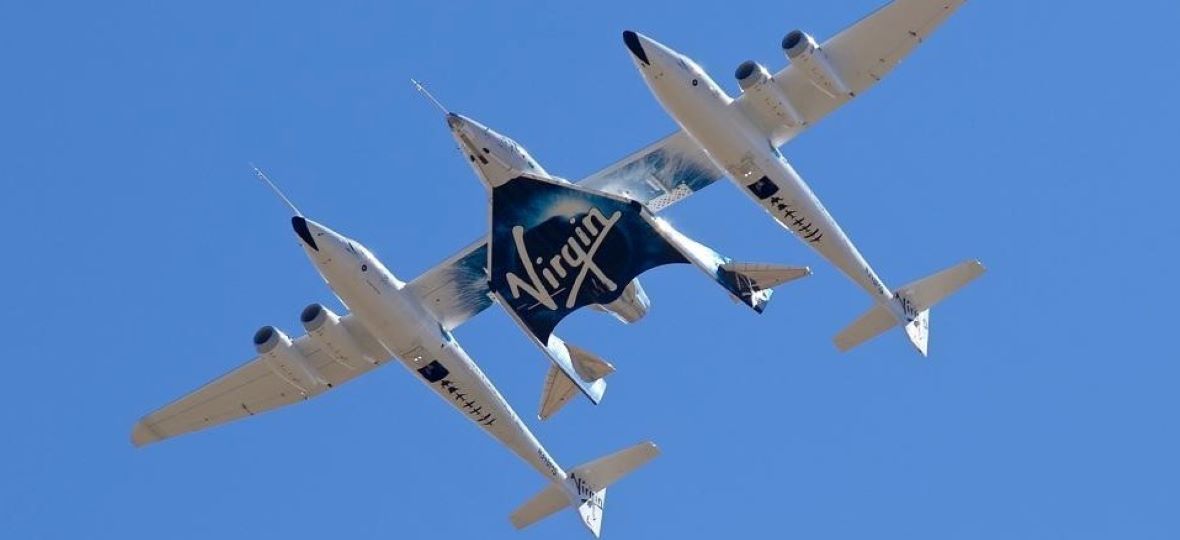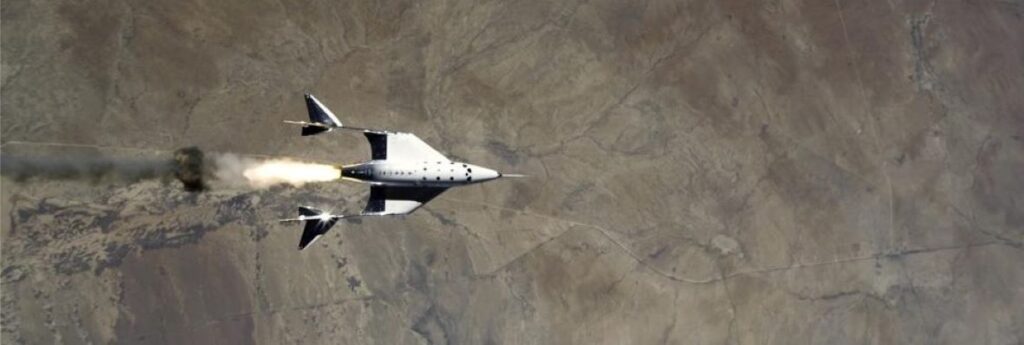Virgin Galactic has made its first rocket-powered flight to the fringe of space in a manned shuttle, as the company forges toward offering tourist flights to the edge of the Earth’s atmosphere. The flight was also the first-ever spaceflight from Spaceport America, making New Mexico the third US state to launch humans into space.
High above the desert in a cloudless sky, the VSS Unity ignited its rocket from the VMS Eve mothership to hurtle the ship and two pilots toward space. The event was broadcast via live feed by NASASpaceFlight.com and showed the ship accelerating upward and confirmed a landing later via radar.
Virgin Galactic said the shuttle accelerated to three times the speed of sound (Mach 3) and reached an altitude of just over 89 km above sea level before making its gliding return through the atmosphere and a runway landing at Spaceport America.
The crew, who observed strict COVID-19 protocols, experienced extraordinary views of the bright, blue-rimmed curvature of the earth against the blackness of space and New Mexico’s White Sands National Park sparkled brilliantly below. Their experience gave Virgin Galactic’s future astronaut customers a glimpse of what lies ahead.
British billionaire and Virgin Galactic founder Sir Richard Branson said the flight and landing bring the roughly 15-year-old venture tantalizingly close to commercial flights for tourists. Virgin Galactic says those flights could begin next year.
“Today was just an incredible step in the right direction,” Branson said shortly after the flight landings. “It tested a lot of new systems that the teams have been building and they all worked.”
Virgin Galactic CEO Michael Colglazier said at least two more undated test flights lie ahead — the next with four mission specialist passengers in the cabin. Pending trials also include a flight that will take Branson to the edge of space.
“Today’s flight showcased the inherent elegance and safety of our spaceflight system, while marking a major step forward for both Virgin Galactic and human spaceflight in New Mexico,” Colglazier said. “Space travel is a bold and adventurous endeavour, and I am incredibly proud of our talented team for making the dream of private space travel a reality.”
Virgin Galactic said the flight provided an assessment of upgrades to a horizontal stabilizer, other flight controls and a suite of cabin cameras designed to provide live images of the flight to people on the ground. The shuttle also carried a scientific payload in cooperation with NASA’s Flight Opportunities Program.
Preparations for the latest flight included a maintenance review of the special carrier plane that flies the six-passenger spacecraft to a high altitude, where it is released so it can fire its rocket motor and make the final push to space.
The first powered test of the rocket ship in New Mexico from Spaceport America was delayed repeatedly before Saturday’s launch. In December 2020, computer trouble caused by electromagnetic interference prevented the spaceship’s rocket from firing properly. Instead of soaring toward space, the ship and its two pilots were forced to make an immediate landing.

Virgin Galactic is one of a few companies looking to cash in on customers with an interest in space.
Elon Musk’s SpaceX will launch a billionaire and his sweepstakes winners in September. That is expected to be followed in January 2022 by a flight by three businessmen to the International Space Station.
Jeff Bezos’ Blue Origin launched a new capsule in January as part of testing as it aims to get its program for tourists, scientists, and professional astronauts off the ground. It’s planning for liftoff of its first crewed flight on July 20, the date of the Apollo 11 moon landing.
Virgin Galactic has reached space twice before. The first time was from California in December 2018.
Check out the video

